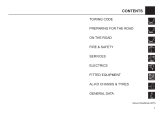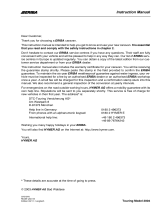2.
In the event of leakage of gas from the system, it is necessary to: - close
the cylinder valve, - extinguish all sources of open fire, - do not use devices that
may cause sparks (electric sockets, power switches, radios, TV sets, etc.), - open
the doors and windows and ventilate the room thoroughly (liquid gas, being
heavier than air, accumulates in the lower parts of the room). In justified cases,
notify your vendor - the gas supplier.
3.
In the event of a fire in the room or cylinder, if possible, turn off the
valve and remove it from the room into the open air. If this is not possible, cool the
cylinder as much as possible using a stream of water or heavy wet rags. The
presence of gas cylinders in the room on fire should be reported to the supervisor
of the firefighting brigade.
NOTE!:
1.
It is forbidden to check the system for leaks using a flame.
2.
It is not allowed to cover air vents.
3.
It is necessary to regularly check the condition of gas hoses and,
when the need arises but always before the expiration date indicated
on the hoses, replace them with new ones, exclusively approved for
use in gas systems.
4.
One approved dry powder or ISO 7165 compliant fire extinguisher,
with a capacity of at least 1 kg, and a fire blanket should be located
near kitchen appliances, in the vicinity of the front door. It is
necessary to familiarise yourself with the fire extinguisher manual
and the local fire protection regulations. Fire extinguisher and
blanket not included
5.
Never allow unqualified persons to modify LPG systems or
equipment.
NOTE !
Improper handling can result in significant amounts of gas
escaping or poor combustion, which can cause a fire or poisoning.
Carbon monoxide exhaust poisoning manifests as tinnitus,
heaviness, increased heart rate, dizziness, vomiting and general
weakness. The person affected should be given first aid and an
ambulance should be called. When giving first aid, you should:
-17-
- take the person affected out into fresh air
-
facilitate breathing by unzipping their clothing,
-
administer sobering agents for inhalation (e.g. ammonia),
-
cover the patient with a blanket and do not let them fall asleep
-
call for medical help and constantly supervise the patient until
medical help arrives
6.5.4.
PLUMBING SYSTEM
The plumbing system includes:
-
water supply lines
-
water tank, capacity 30 l
-
water drain line
-
electric valve tap
-
electric pump
The water tank is located in the left front sofa.
Place the pump in the water tank. Water flows out of the tap when the valve is
turned (the pump is turned on automatically).
The water used is discharged through a system of water lines under the
caravan.
It is recommended to park the caravan in a caravan site over a drainage grate
so that the water flowing out does not spill over the sides.
6.5.5.
TRAVEL TOILET
The caravan is equipped with a travel toilet. The toilet is fitted with a tank,
accessed from the outside of the caravan through a special door.
For a detailed description of the use and operation of the travel toilet,
please refer to the manual supplied with the caravan.
7.
BODYWORK MAINTENANCE
Caravan body and windows
Bodywork maintenance consists in keeping it clean. The laminate can be
secured against dirt absorption using wax preparations designed for car
bodyworks and wet cleaned, preferably with special washing agents. Windows
should be washed using a soft cloth, thoroughly rinsed with water and protected
against scratches.
-18-















